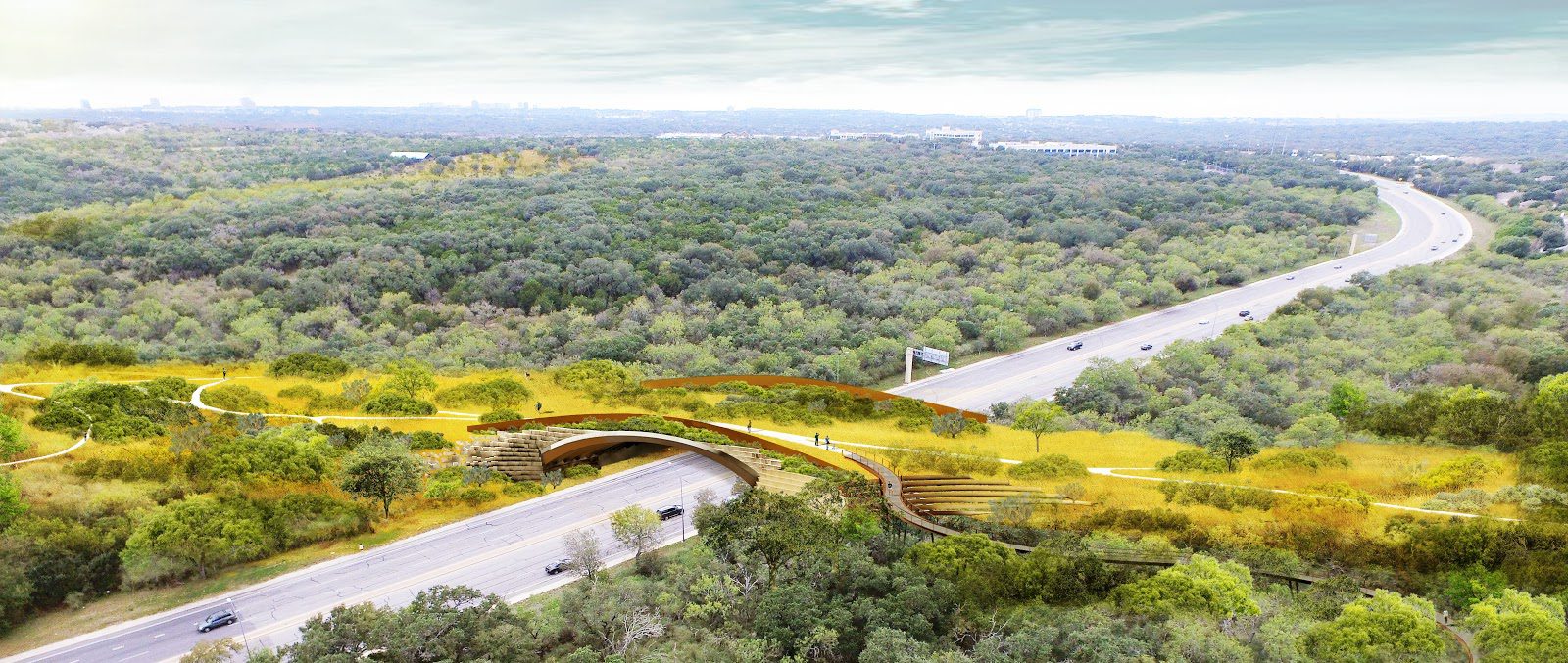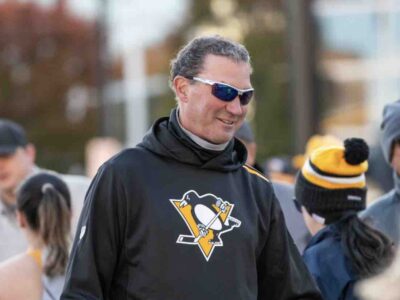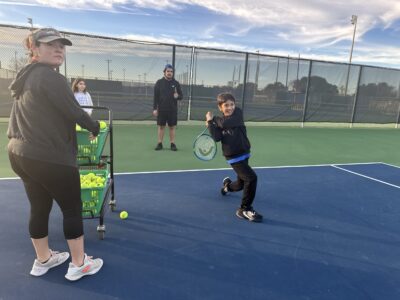Why did the chicken cross the road? To get to the other side. It’s a joke most of us have heard our entire lives, but few people ask how did the chicken cross the road? For both motorists and animals, traditional animal crossings just aren’t good enough. Anyone who’s ever seen a deer in their headlights knows that there has to be a better way for these animals to roam free. Thanks to efforts across the country, organizations are constructing wildlife bridges that allow animals to rise above the flow of traffic.
The notion that everything is bigger in Texas, is certainly true in this case. San Antonio recently opened the Robert L.B. Tobin Land Bridge, the largest wildlife bridge in the country. Spanning 150 feet over the six-lane Wurzbach Parkway, this wildlife bridge is topped with trails, indigenous plants, and sound blocking panels to keep out the traffic noise.
Most importantly, the bridge connects both sides of Phil Hardberger Park. Previously this sprawling, 330-acre park in the heart of San Antonio was divided by the parkway, meaning that visitors, staff, and animals were disconnected from enjoying the full acreage. The staff considered alternative projects for unifying both halves of the park, including a tunnel, but ultimately they decided that an animal-friendly bridge would be the best solution.
Funding for the wildlife bridge came from private donations and the City of San Antonio’s 2017-2022 Bond Program. Phil Hardberger, former San Antonio Mayor and judge, told local reporters from Texas Public Radio, “I am honored to invite San Antonians to come experience the Land Bridge and hope it will offer them an escape from the stresses of this year — a place where they may spend time with family and friends and connect with the natural world.”
The Robert L.B. Tobin Land Bridge includes several paths for park visitors to enjoy as well as two “blinds” designed by local artists. The blinds allow families to observe wildlife as they use the bridge to access the full run of the park. Many animals have been observed scurrying and prancing among the live oak trees, mountain laurels, prickly pear cacti, and persimmon trees. Visitors can expect to see white-tailed deer, ring-tailed cats, coyotes, armadillos, and more according to Texas Highways.
Wildlife bridges such as these also serve to reduce the number of accidents that happen between areas supporting a large population of wildlife. With so many animals threatened, or at the risk of becoming endangered, these wildlife bridges offer a solution that is cheaper, better for the animals, and helps save human lives. “Over the most recently reported 15-year period, wildlife-vehicle collisions have increased by 50 percent, with an estimated one to two million large animals killed by motorists every year,” Rob Ament, the road ecology program manager at Western Transportation Institute, told National Geographic. “You can get reductions of 85 to 95 percent with crossings and fencing that guide animals under or over highways.” Not only would this mean fewer animals injured or killed along the highway, but it would also reduce the amount of potentially fatal accidents that happen on the roadways every year.
While Texas might claim the largest wildlife crossing, similar structures are popping up in the wilds of Washington State, across the Colorado Rocky Mountains, and down in the Florida wetlands. No matter the population, these wildlife bridges are proving to be an effective tool to protect animals, while simultaneously reducing the number of accidents that occur on the road. After placing cameras along the wildlife bridge stretching over Utah’s Interstate 80, officials observed large animals like elk and deer using the bridge as well as predators like black bears and bobcats.
Most experts predicted that it would take years for animals to incorporate the bridges into their migratory patterns, but after only a few months, animals in Utah are crossing with confidence. “It’s great to see so many different animals using the overpass,” John Gleason, Utah Department of Transportation, told the Salt Lake Tribune. “From what we can tell, the number of accidents there is down dramatically. At least initially, it appears the investment in safety is paying off.”





